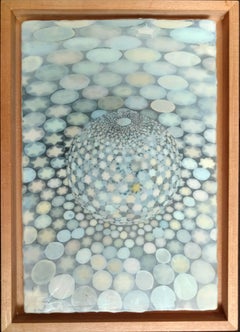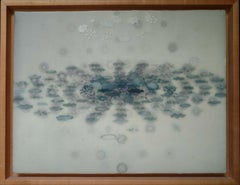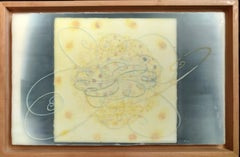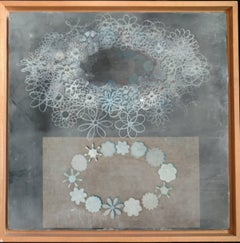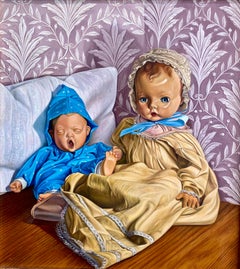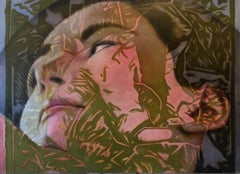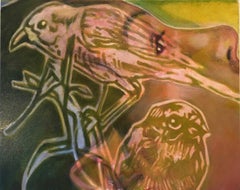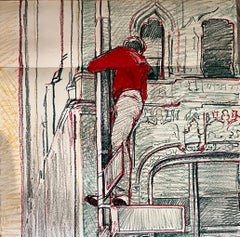Nancy Hoffman
1990s Contemporary Mixed Media
Plywood, Encaustic, Digital
1990s Contemporary Mixed Media
Plywood, Encaustic, Digital
1990s Contemporary Mixed Media
Plywood, Encaustic, Digital
1990s Contemporary Mixed Media
Plywood, Encaustic, Digital
1990s Contemporary Mixed Media
Plywood, Encaustic
21st Century and Contemporary Realist Portrait Paintings
Linen, Oil
2010s Contemporary Figurative Paintings
Oil, Canvas
2010s Contemporary Figurative Paintings
Canvas, Oil
1980s Contemporary Figurative Drawings and Watercolors
Paper, Oil Crayon
2010s Contemporary Figurative Paintings
Oil, Canvas
1990s Contemporary Abstract Paintings
Metal
1980s Pop Art Figurative Prints
Lithograph, Offset
1960s Abstract Abstract Paintings
Canvas, Synthetic Resin, Acrylic
21st Century and Contemporary Assemblage Abstract Sculptures
Plastic, Board
21st Century and Contemporary Assemblage Abstract Sculptures
Plastic, Board
21st Century and Contemporary Assemblage Abstract Sculptures
Found Objects, Pins
21st Century and Contemporary Assemblage Abstract Sculptures
Plastic, Board
21st Century and Contemporary Kinetic Abstract Sculptures
Found Objects
21st Century and Contemporary Assemblage Abstract Sculptures
Found Objects, Pins
21st Century and Contemporary Kinetic Abstract Sculptures
Found Objects, Pins
1970s Pop Art Abstract Prints
Other Medium, Lithograph, Pencil
20th Century Contemporary Landscape Paintings
Monotype
1970s American Modern Abstract Prints
Etching, Aquatint
1970s American Modern Abstract Prints
Etching, Aquatint
Late 20th Century American Realist Figurative Prints
Lithograph
1980s Abstract Abstract Paintings
Canvas, Cord, Acrylic, Mixed Media
1980s Abstract Expressionist Abstract Drawings and Watercolors
Watercolor, Woodcut
1980s Pop Art Figurative Paintings
Canvas, Oil
1980s Abstract Expressionist Abstract Paintings
Paint, Mixed Media, Monotype
Terence La NoueLarge Abstract Modernist Monterey Series Mixed Media Monotype Colorful Painting, 1984
1990s Abstract Expressionist Abstract Paintings
Paint, Mixed Media, Monotype
1970s Modern Landscape Prints
Color, Ink, Lithograph
1980s Surrealist Landscape Prints
Archival Paper, Lithograph, Color
1980s Modern Figurative Prints
Lithograph
1970s Surrealist Figurative Prints
Archival Paper
21st Century and Contemporary Contemporary Mixed Media
Wood, Acrylic, Other Medium
21st Century and Contemporary Contemporary Mixed Media
Wood, Acrylic, Other Medium
1990s Contemporary Mixed Media
Plywood, Encaustic, Digital
1990s Contemporary Mixed Media
Plywood, Encaustic, Digital
1990s Contemporary Mixed Media
Plywood, Encaustic, Digital
1990s Contemporary Mixed Media
Plywood, Encaustic, Digital
1990s Contemporary Mixed Media
Plywood, Encaustic
1960s Abstract Abstract Paintings
Canvas, Synthetic Resin, Acrylic
1970s American Modern Abstract Prints
Etching, Aquatint
1970s American Modern Abstract Prints
Etching, Aquatint
1970s Abstract Expressionist Abstract Paintings
Watercolor
1980s Abstract Expressionist Abstract Drawings and Watercolors
Watercolor, Woodcut
1970s Abstract Expressionist Abstract Drawings and Watercolors
Watercolor, Pencil
1980s Abstract Expressionist Abstract Drawings and Watercolors
Watercolor, Woodcut
1970s Abstract Expressionist Abstract Drawings and Watercolors
Watercolor, Pencil
1980s Abstract Expressionist Abstract Paintings
Paint, Mixed Media, Monotype
Terence La NoueLarge Abstract Modernist Monterey Series Mixed Media Monotype Colorful Painting, 1984
1990s Abstract Expressionist Abstract Paintings
Paint, Mixed Media, Monotype
1980s Abstract Expressionist Abstract Paintings
Paint, Mixed Media, Monotype
Terence La NoueLarge Abstract Modernist Monterey Series Mixed Media Monotype Colorful Painting, 1984
1990s Abstract Expressionist Abstract Paintings
Paint, Mixed Media, Monotype
1980s Abstract Expressionist Abstract Paintings
Paint, Mixed Media
1980s Pop Art Figurative Drawings and Watercolors
Paper, Oil Crayon
1970s Abstract Expressionist Abstract Drawings and Watercolors
Watercolor, Pencil
1970s Abstract Expressionist Abstract Drawings and Watercolors
Watercolor, Pencil
- 1
